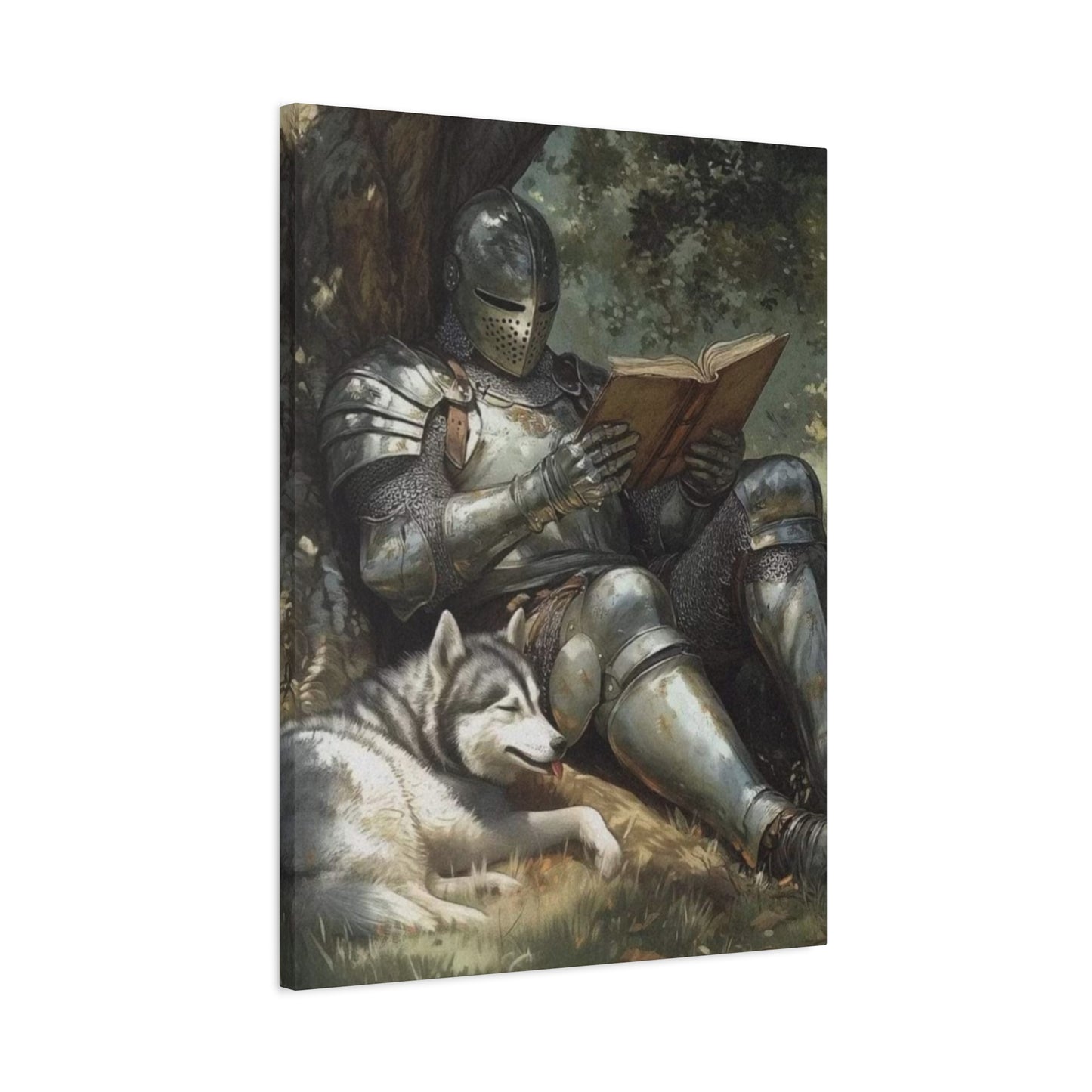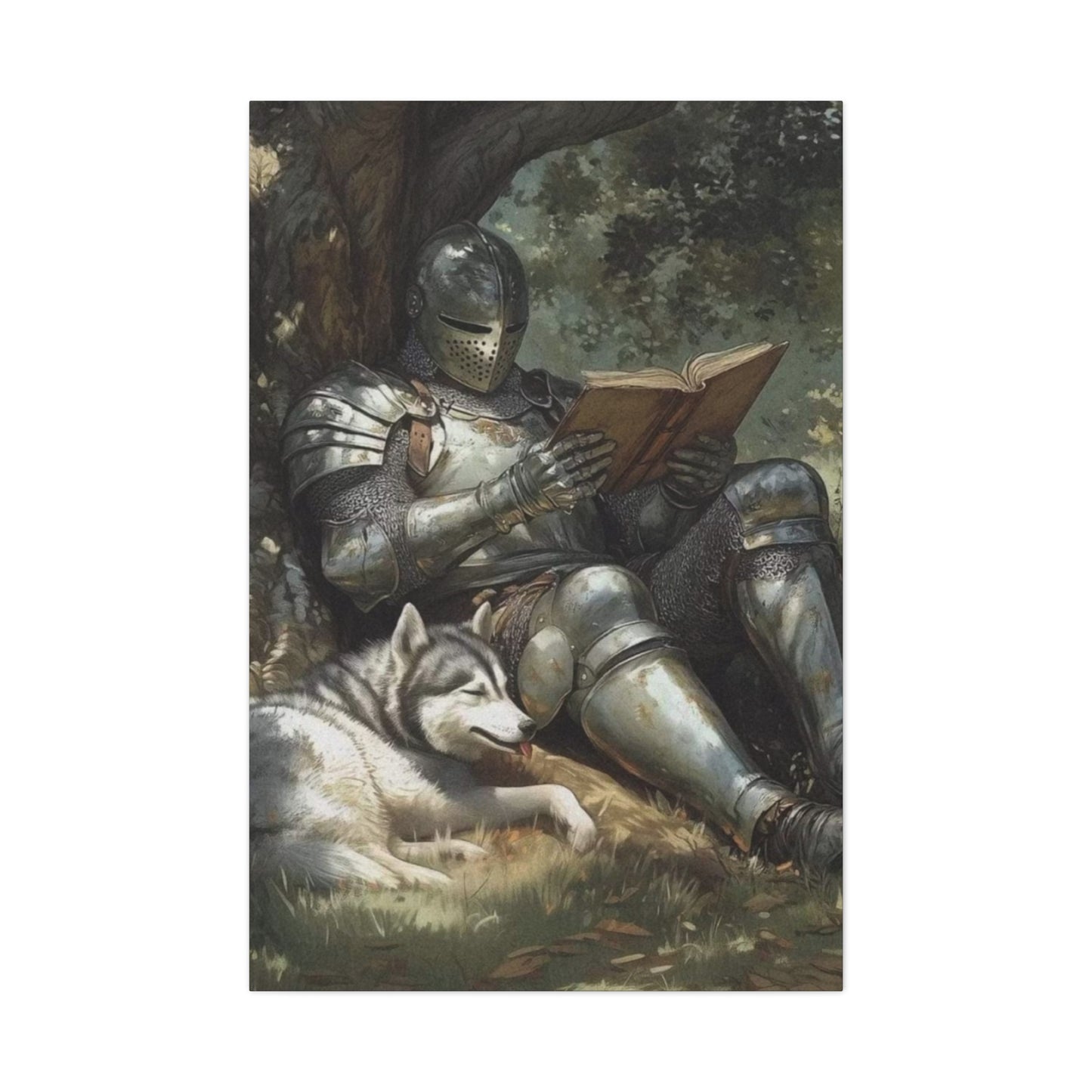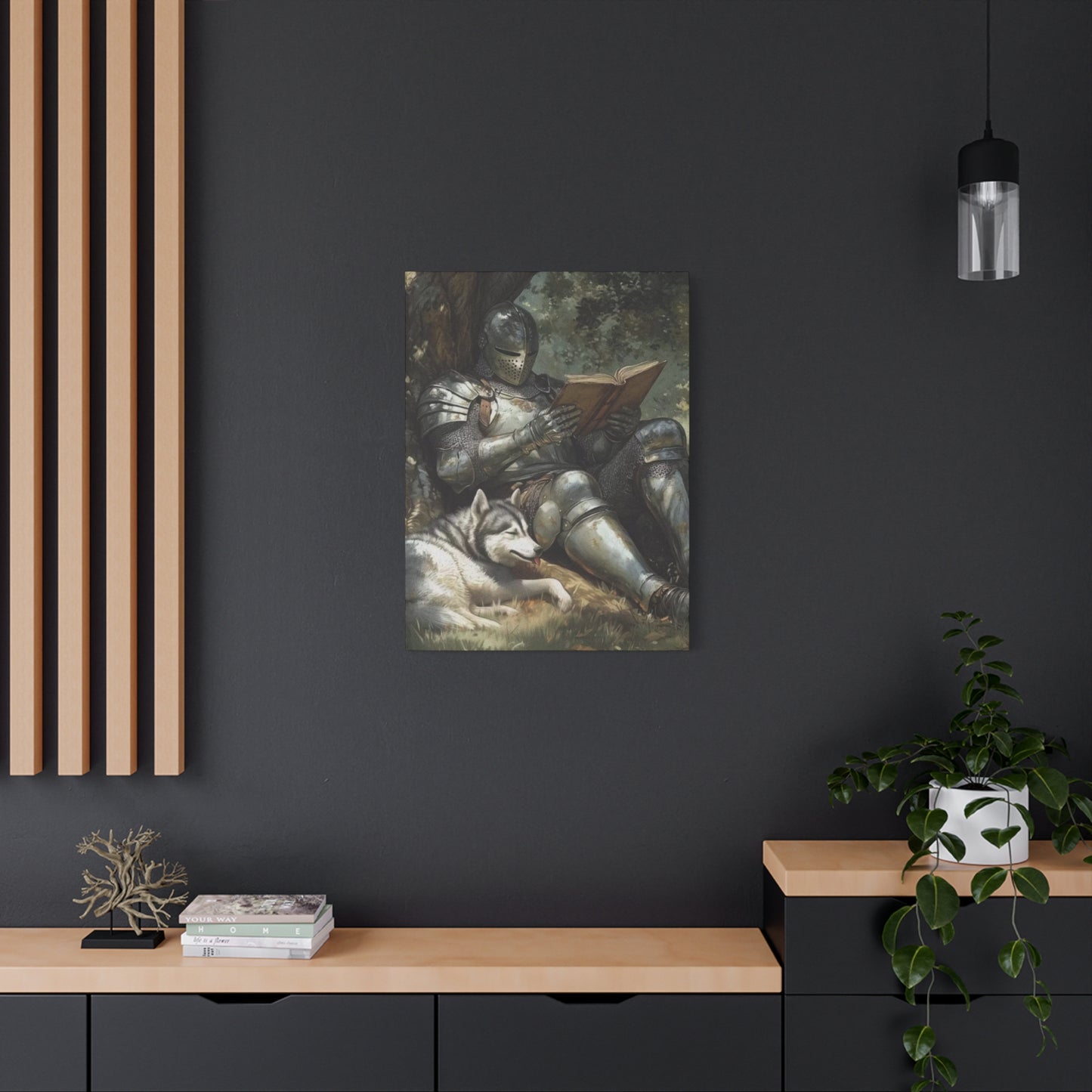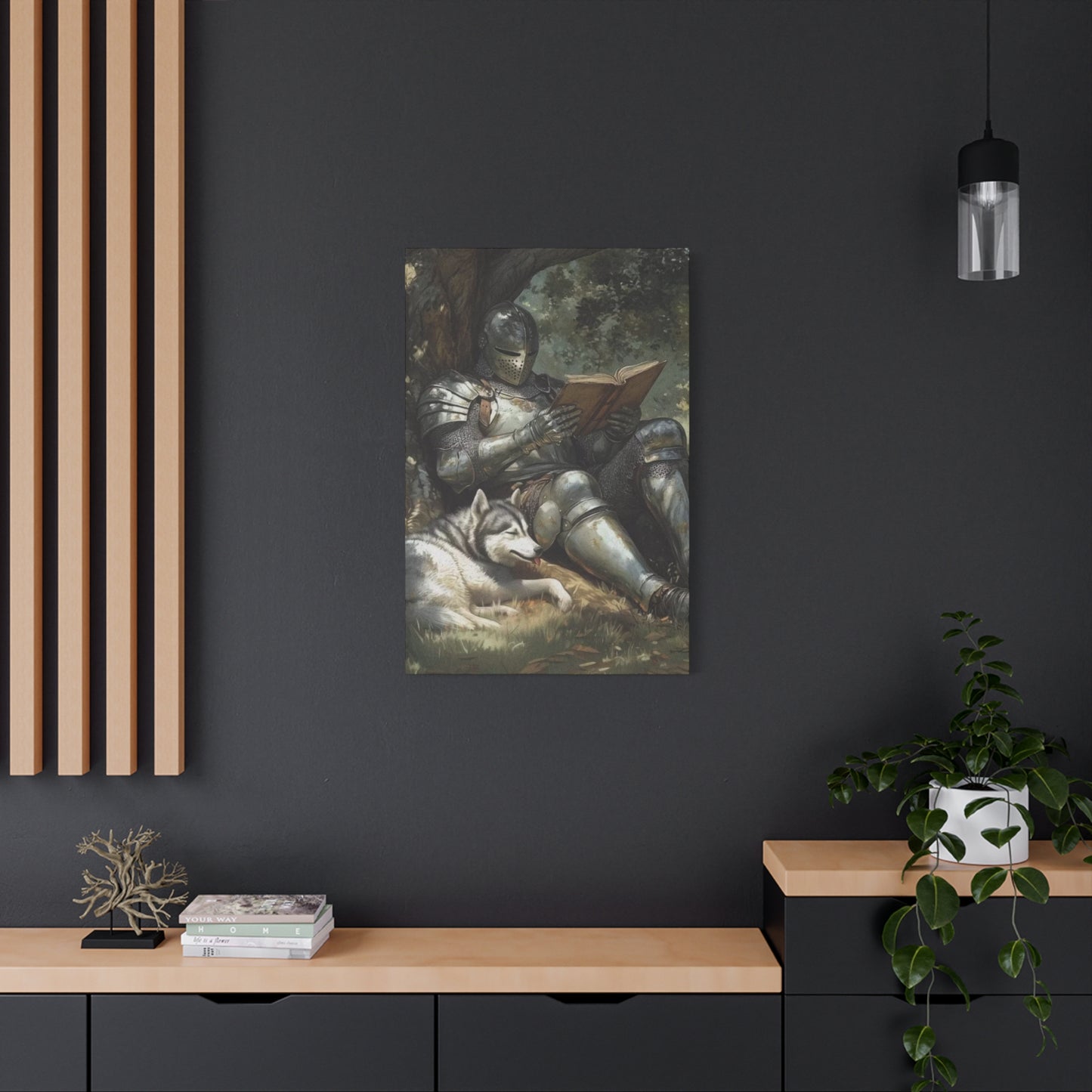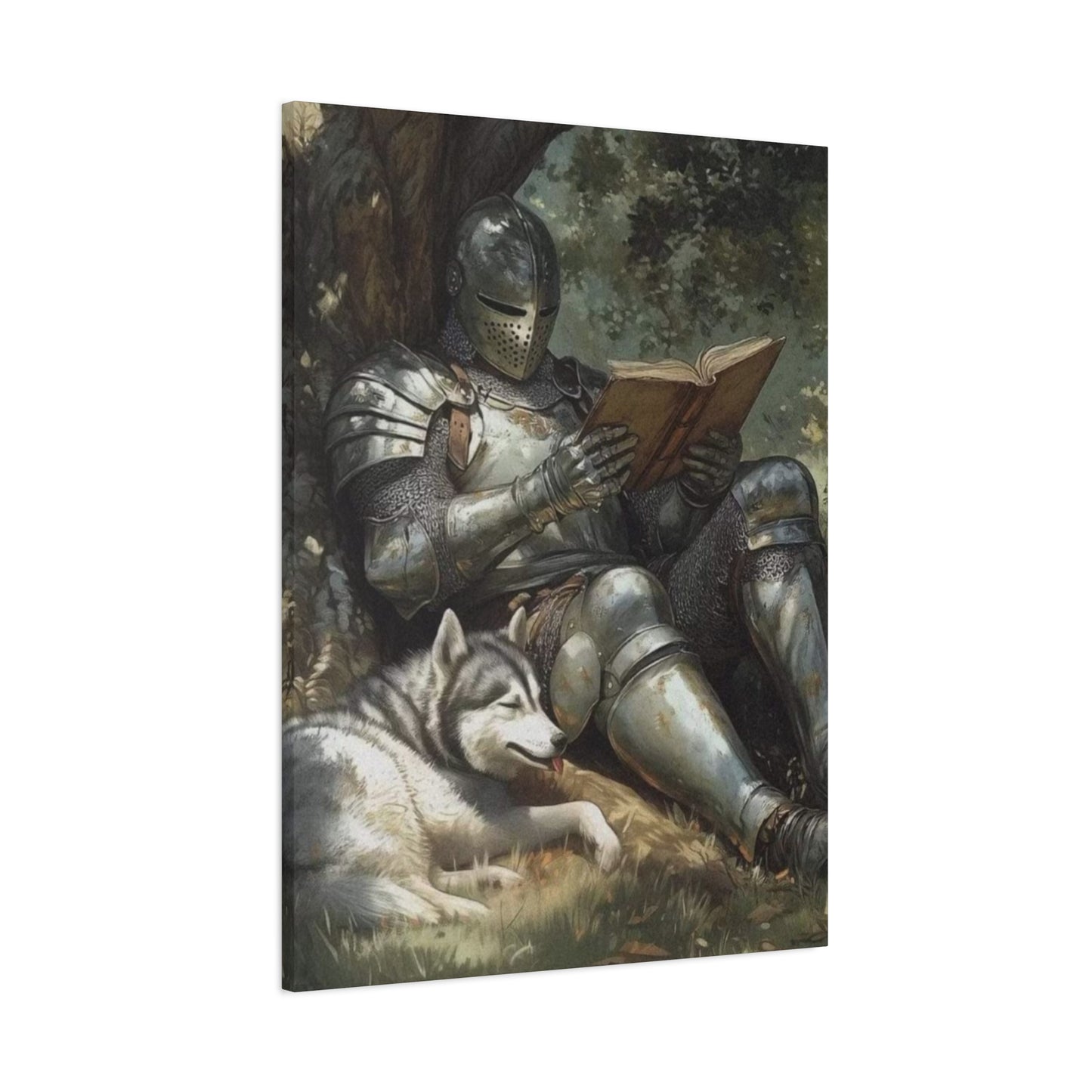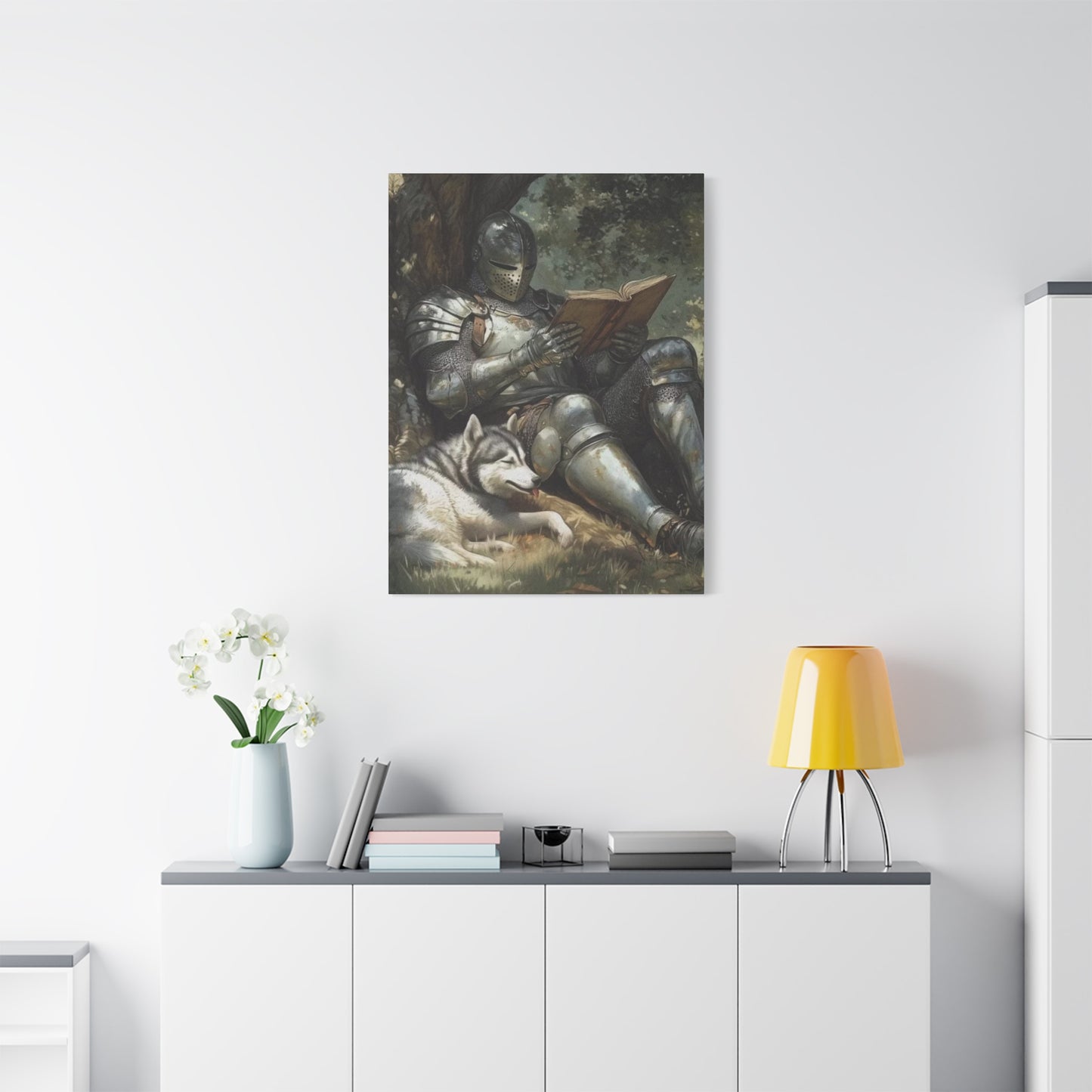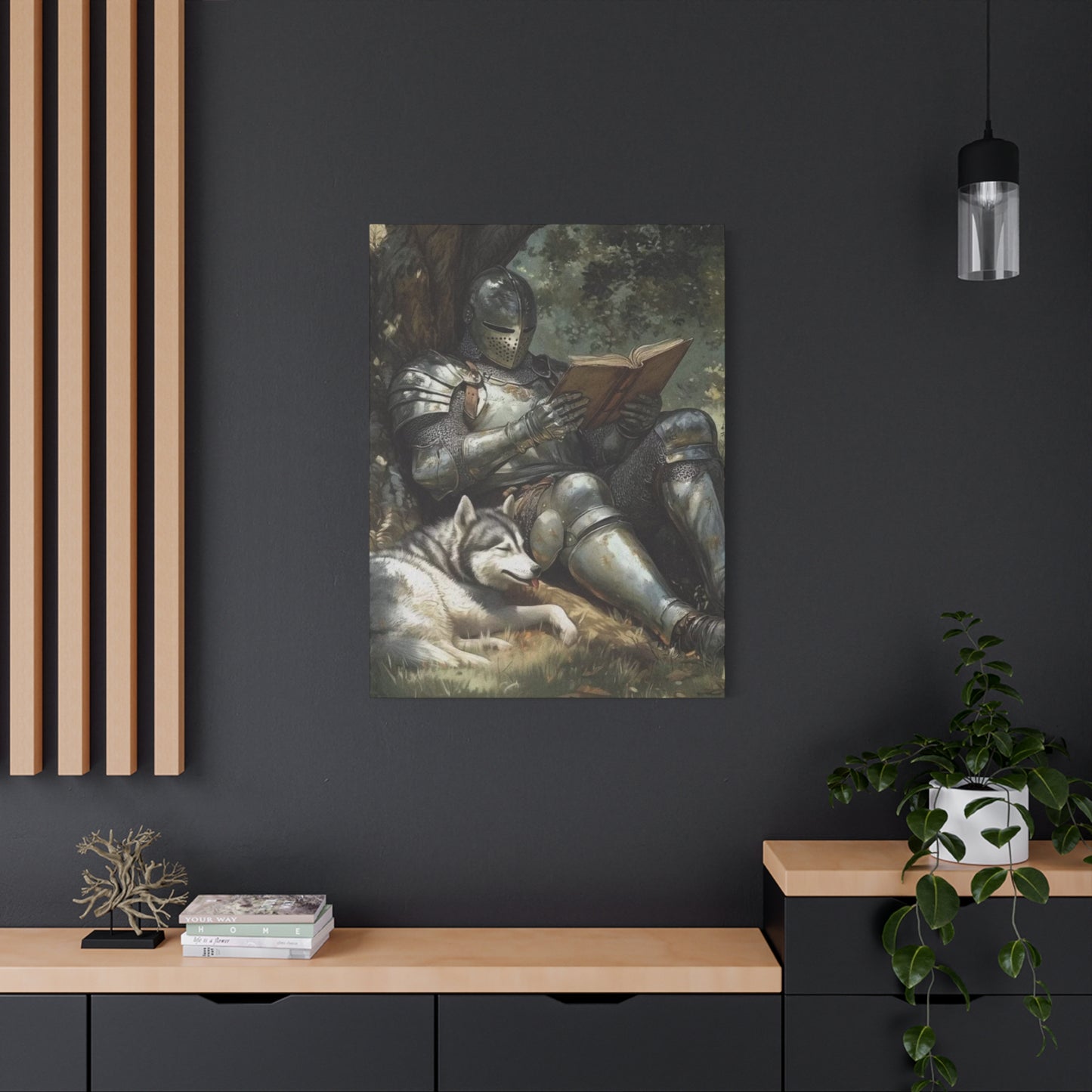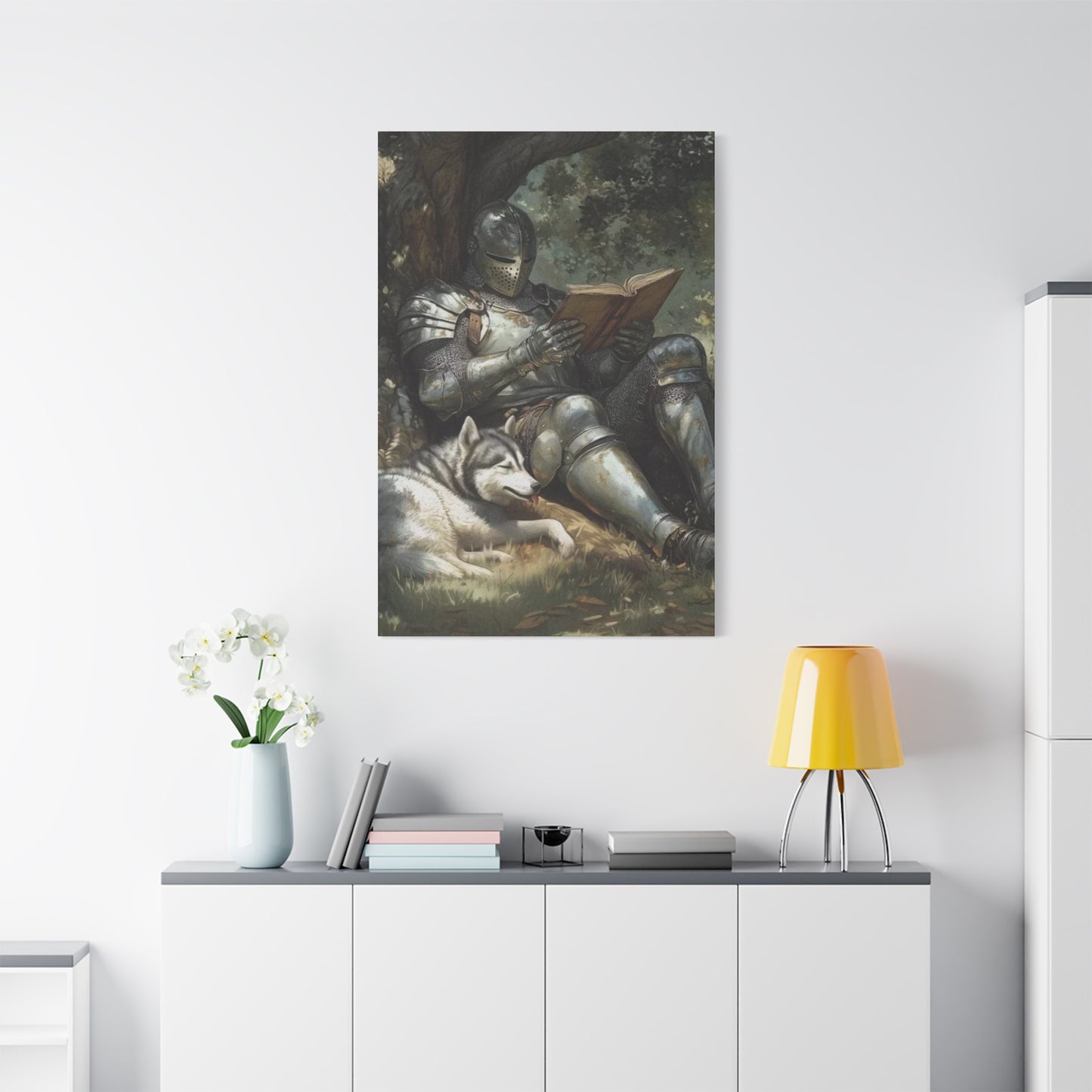Warrior Reading Book With Husky Wall Art: Creating Powerful Statement Pieces for Modern Spaces
The intersection of strength, wisdom, and companionship finds its perfect expression in warrior reading book with husky wall art. This distinctive artistic genre has captured the imagination of homeowners, interior designers, and art enthusiasts who seek to infuse their living spaces with meaningful symbolism. The combination of a warrior engrossed in reading alongside the loyal presence of a husky creates a narrative that speaks to both intellectual pursuit and primal connection. These artistic pieces transcend mere decoration, offering viewers a glimpse into a world where knowledge and nature coexist harmoniously.
The appeal of this artistic theme lies in its multifaceted symbolism. Warriors traditionally represent courage, discipline, and honor, while the act of reading introduces elements of wisdom, contemplation, and personal growth. The husky, known for its loyalty, endurance, and wild spirit, adds another dimension to the composition. Together, these elements create a powerful visual statement that resonates with individuals seeking depth and meaning in their home decor. The genre has evolved significantly, incorporating various artistic styles from photorealistic renderings to abstract interpretations, each offering unique perspectives on this compelling theme.
Symbolism Behind Warriors and Literature in Visual Arts
The portrayal of warriors engaged with literature carries profound symbolic weight across cultures and time periods. Throughout history, the greatest military leaders were often scholars who understood that true strength comes not just from physical prowess but from intellectual development. This duality challenges the outdated stereotype of the warrior as merely a combatant, instead presenting a more nuanced character who seeks knowledge and understanding. The image of a warrior reading represents the balance between action and contemplation, between external battles and internal growth.
In contemporary wall art, this symbolism takes on new relevance. Modern audiences appreciate the reminder that personal development requires both strength and wisdom. The warrior reading serves as a metaphor for the daily battles individuals face in their own lives, whether professional challenges, personal growth, or the pursuit of knowledge. The act of reading represents the tools and strategies we gather through education and experience, while the warrior embodies the courage needed to apply that knowledge in real-world situations.
The philosophical implications extend further into the realm of lifelong learning. A warrior who continues to read even after battles demonstrates that education never truly ends. This resonates particularly strongly in our information age, where continuous learning has become essential for success and fulfillment. The artwork serves as a daily reminder that no matter how experienced or accomplished one becomes, there is always more to learn, more wisdom to acquire, and more perspectives to consider.
The Significance of Huskies in Artistic Compositions
Huskies bring their own rich symbolism to these artistic arrangements. These magnificent creatures embody wilderness, freedom, and untamed spirit while simultaneously representing loyalty, companionship, and teamwork. Their presence in warrior-themed artwork creates an interesting dynamic, suggesting that even the strongest individuals benefit from loyal companions. The husky's dual nature as both independent and pack-oriented mirrors the warrior's balance between self-reliance and community connection.
The physical characteristics of huskies make them particularly striking subjects for wall art. Their piercing eyes, often blue or heterochromatic, draw viewers into the composition and create focal points that command attention. The distinctive facial markings and thick coat provide artists with opportunities to showcase their technical skills through detailed rendering of texture and form. When positioned alongside a warrior figure, the husky's alert posture and noble bearing complement the warrior's own dignified presence.
Beyond aesthetics, huskies carry cultural significance from their origins among indigenous peoples of cold regions. These dogs were essential partners in survival, pulling sleds across vast frozen landscapes and serving as companions during long, dark winters. This historical context adds depth to artwork featuring huskies, connecting viewers to traditions of endurance, cooperation, and respect for nature. The inclusion of a husky in warrior artwork thus references not only the animal itself but an entire heritage of human-animal partnership based on mutual respect and shared challenges.
Artistic Styles and Interpretations in Modern Wall Decor
Contemporary artists approach warrior reading book with husky wall art through numerous stylistic lenses. Photorealistic interpretations capture every detail with stunning accuracy, from the texture of aged leather book covers to individual strands of fur in the husky's coat. These pieces appeal to viewers who appreciate technical mastery and want artwork that showcases the artist's observational skills. The hyper-detailed approach creates an immersive quality, inviting viewers to step into the scene and imagine themselves in that contemplative moment.
Abstract and impressionistic versions offer different advantages, using color, shape, and suggestion rather than precise detail. These interpretations emphasize mood and emotion over literal representation. Broad brushstrokes might indicate the warrior's form while splashes of blue and white suggest the husky's presence. This approach allows viewers to participate more actively in the artwork, filling in details with their imagination and creating personal connections to the piece. The abstract style also tends to work well in modern, minimalist interiors where overly detailed artwork might feel cluttered or overwhelming.
Mixed media approaches combine various techniques and materials to create layered, textured pieces. An artist might use oil paints for the warrior figure, incorporate actual book pages for the reading material, and add dimensional elements like metal or wood for accent pieces. The husky might be rendered in soft pastels or charcoal, creating contrast with other elements. These experimental pieces push boundaries and offer collectors something truly unique that serves as a conversation starter and artistic focal point.
Enhance the Warrior and Husky Theme
Color selection plays a crucial role in establishing the mood and impact of warrior reading book with husky wall art. Earth tones create a grounded, natural feeling that emphasizes the connection between warrior, animal, and the natural world. Browns, tans, and olive greens suggest outdoor settings, perhaps a campsite or wilderness retreat where the warrior pauses for reflection. These warm, organic colors make spaces feel more inviting and comfortable while maintaining the strength inherent in the theme.
Cool color schemes featuring blues, grays, and silvers evoke different emotions. These palettes might suggest northern landscapes, connecting to the husky's arctic heritage. The cooler tones create a sense of calm contemplation, perfect for studies, libraries, or meditation spaces. When combined with strategic warm accents, perhaps in the fire lighting the warrior's reading or touches of gold in armor details, the contrast becomes dynamic and visually engaging without overwhelming the senses.
Monochromatic approaches using variations of a single color create sophisticated, cohesive pieces. A composition rendered entirely in shades of blue, from deep navy to pale ice blue, achieves visual unity while still allowing for depth and dimension. Black and white versions carry their own power, stripping away color to focus entirely on form, contrast, and composition. These timeless pieces work exceptionally well in contemporary interiors and never feel dated or tied to specific color trends.
Composition Techniques for Balanced Visual Storytelling
Effective composition transforms individual elements into cohesive narratives. The placement of the warrior, book, and husky requires careful consideration to guide the viewer's eye through the piece. Many artists position the warrior as the primary focus, with the husky either at their side or slightly behind, creating a protective presence. The book serves as a connecting element, perhaps positioned so both warrior and viewer can almost see its pages, inviting shared participation in the reading experience.
Triangular compositions provide natural stability and visual satisfaction. The warrior's head might form the apex of a triangle, with the husky's position and the book creating the base points. This arrangement feels balanced and complete without being rigid or overly formal. The triangle also creates multiple sight lines, allowing the viewer's eye to travel naturally between elements, discovering new details with each viewing. This compositional approach has been favored throughout art history for its ability to create dynamic yet harmonious arrangements.
Depth and layering add dimensionality to the artwork. Foreground elements might include details like scattered scrolls, weapon stands, or natural elements like rocks or fallen leaves. The middle ground contains the primary subjects, while the background establishes setting through suggested architecture, landscape features, or atmospheric effects. This layering creates a sense of space that makes the scene feel more realistic and inviting, as if viewers could step into the artwork and join the warrior in their quiet moment of study.
Material Choices for Different Interior Aesthetics
Canvas remains the most popular medium for warrior reading book with husky wall art due to its versatility and traditional association with fine art. Gallery-wrapped canvas creates a clean, modern presentation where the image extends around the edges, eliminating the need for frames. This approach works particularly well in contemporary spaces where minimalism and clean lines are priorities. The texture of canvas adds subtle visual interest and responds beautifully to lighting, creating slight variations in appearance throughout the day as natural and artificial light sources change.
Metal prints offer striking alternatives with unique properties. The image is infused into specially coated aluminum, creating vibrant colors and sharp details that seem to glow from within. These prints are exceptionally durable, resistant to fading, and easy to clean, making them ideal for high-traffic areas or spaces where maintenance might otherwise be challenging. The sleek, modern appearance of metal prints complements industrial and contemporary interiors, adding an edge that traditional canvas might lack in these settings.
Wood prints and panels create rustic, organic presentations perfectly suited to cabins, lodges, or homes with natural, earthy aesthetics. The image is transferred directly onto prepared wood surfaces, allowing the natural grain to show through and become part of the artwork itself. This integration of natural wood texture with the warrior and husky imagery reinforces themes of nature, survival, and connection to the earth. Each piece becomes unique since no two wood panels have identical grain patterns, ensuring that owners possess something truly one of a kind.
Considerations for Maximum Visual Impact
The scale of warrior reading book with husky wall art dramatically affects its presence and effectiveness in a space. Large statement pieces, ranging from four feet to eight feet or more in width, command attention and serve as room focal points. These oversized works are ideal for spacious living rooms, great rooms, or commercial spaces where they can be viewed from a distance. The grand scale allows for incredible detail and creates an immersive quality that smaller pieces cannot achieve. Viewers can stand close to examine intricate elements or step back to appreciate the overall composition, offering multiple viewing experiences from a single piece.
Medium-sized pieces between two and four feet wide offer flexibility for various room sizes and arrangements. These dimensions work well above sofas, beds, or console tables, providing visual weight without overwhelming surrounding elements. The moderate scale makes them suitable for offices, bedrooms, dining rooms, and medium-sized living areas. They're large enough to make a statement and showcase artistic detail while remaining proportionate to typical residential spaces and furniture arrangements.
Smaller pieces and gallery arrangements provide opportunities for collecting multiple related works or creating custom displays. Individual pieces ranging from twelve to twenty-four inches might depict different scenes of the warrior and husky or focus on specific elements like the warrior's face, the husky's eyes, or details of ancient texts. Arranged in groupings of three, five, or seven pieces, these smaller works create visual interest through repetition and variation. This approach allows for creative freedom in arrangement and the flexibility to reconfigure the display over time or adapt to different spaces if you move.
Framing Options to Complement the Artwork
Frame selection significantly influences how warrior reading book with husky wall art integrates with existing decor. Traditional wooden frames with rich finishes like walnut, mahogany, or oak add warmth and classical elegance. These frames work particularly well with more realistic or traditional artistic interpretations and in spaces featuring wood furniture, built-in shelving, or traditional architectural elements. The frame becomes part of the artwork's story, perhaps suggesting the warrior's study or library where such framed pieces might naturally appear.
Modern metal frames in black, silver, or bronze finishes create clean, contemporary presentations. The slim profiles keep focus on the artwork while providing necessary support and creating defined boundaries between the piece and the wall. These frames excel in modern, industrial, or transitional spaces where ornate traditional frames might feel out of place. The metal material creates interesting connections to armor and weapons that might appear in warrior imagery, subtly reinforcing the theme through material choice.
Floating frames create sophisticated presentations where a small gap exists between the artwork and frame, making the piece appear to float within the frame's boundaries. This technique adds depth and dimensionality while maintaining a clean, modern aesthetic. The shadow created by the floating effect draws the eye inward toward the artwork and creates visual interest through the interplay of light and shadow. This framing style works exceptionally well with contemporary interiors and helps artwork maintain its impact without competing with ornate frame details.
Placement Strategies for Optimal Room Enhancement
Strategic placement maximizes the impact of warrior reading book with husky wall art. In living rooms, positioning the piece as a focal point above the main seating area creates a natural gathering point and conversation starter. The artwork should be at eye level when seated, allowing comfortable viewing during everyday use. Consider the room's traffic flow and ensure the piece can be appreciated from multiple angles and distances, not just from a single viewing position. Lighting plays a crucial role here, with options including picture lights, track lighting, or strategic placement to take advantage of natural light without causing glare or fading.
Home offices and personal studies provide particularly appropriate settings for this theme. The symbolism of the warrior's dedication to learning aligns perfectly with workspaces dedicated to professional development, creativity, or intellectual pursuits. Position the artwork where it can be seen during work sessions, serving as inspiration during challenging projects or reminder of the importance of continuous learning. The warrior's example of balancing strength with wisdom offers relevant encouragement for navigating professional challenges and maintaining focus on long-term growth.
Bedroom placements create intimate, personal connections with the artwork. Above the bed, the warrior and husky scene can be the last thing you see before sleep and the first thing upon waking, bookending each day with reminders of loyalty, strength, and the pursuit of knowledge. Alternative placements might include accent walls opposite the bed, creating a focal point visible from the bed but not directly overhead. The bedroom setting allows for more personal, emotional connections with the artwork since it's experienced in private, reflective moments rather than shared social spaces.
Cultural Influences and Historical Context in Design
Viking and Norse cultural elements frequently appear in warrior reading book with husky wall art due to historical connections between northern warriors and both literacy and wolf-like dog companions. Viking warriors were not merely raiders but also explorers, traders, and settlers who valued poetry, storytelling, and runic writing. Their societies produced rich literary traditions including sagas, eddas, and skaldic poetry that recorded history, mythology, and cultural values. Incorporating Norse design elements like knotwork, runes, or references to Viking Age aesthetics adds layers of historical authenticity and cultural depth to the artwork.
Samurai traditions offer another rich source of inspiration, as Japanese warriors were expected to cultivate both martial skills and artistic accomplishments. The bushido code emphasized literacy, calligraphy, poetry, and tea ceremony alongside weapon mastery and battlefield tactics. Samurai were often as accomplished with brush and ink as with sword and bow. Artwork drawing on this tradition might include elements like traditional Japanese architecture, cherry blossoms, or styles reminiscent of ukiyo-e woodblock prints. The husky, while not native to Japan, can be incorporated as a symbolic companion representing loyalty and devotion, qualities highly prized in samurai culture.
Medieval European knights provide yet another cultural framework for this theme. The ideals of chivalry included not just military prowess but also education, courtesy, and moral development. Knights were expected to be literate, familiar with romantic poetry, and capable of sophisticated discourse. Monastic warrior orders combined religious devotion with military service, producing communities where scholarship and combat training coexisted. Artwork reflecting these traditions might include Gothic architectural elements, illuminated manuscript styles, or heraldic devices, creating pieces that feel both powerful and refined.
Impact of Warrior and Animal Imagery
The psychological effects of warrior reading books with husky wall art extend beyond mere decoration into the realm of environmental psychology. Images of warriors activate associations with strength, courage, and capability, qualities that can boost confidence and self-efficacy when regularly viewed. The reading element moderates this aggressive symbolism, suggesting controlled power and directed energy rather than raw force. This balance creates an environment that feels both empowering and thoughtful, supporting residents in pursuing their goals with both determination and wisdom.
Animal imagery, particularly of powerful creatures like huskies, connects viewers to natural instincts and primal energy. Psychological research suggests that exposure to images of animals can reduce stress, lower blood pressure, and improve mood. The specific choice of a husky adds elements of loyalty and companionship, subtly reminding viewers of the importance of relationships and support systems. The combination of human and animal figures creates a complete scene that feels less isolated or austere than a solo warrior image might, suggesting that even strong individuals benefit from companionship and connection.
The contemplative nature of the reading activity introduces elements of mindfulness and presence into the composition. Unlike action scenes depicting battle or movement, a warrior absorbed in reading demonstrates focused attention and mental discipline. This imagery can influence viewers toward similar states of concentration and calm. The artwork essentially functions as a visual anchor for values like continuous learning, self-improvement, and the thoughtful application of knowledge, reinforcing these priorities simply through regular exposure to the imagery.
Customization Options for Personal Significance
Personalized warrior reading book with husky wall art creates unique pieces with special meaning to owners. Many artists offer customization services where they incorporate specific features requested by clients. This might include particular armor styles, weapon choices, or cultural elements that reflect personal heritage or interests. The warrior's appearance can be customized to represent specific historical periods, fictional characters, or even idealized self-portraits. Such personalization transforms the artwork from generic decoration into a meaningful reflection of personal identity and values.
The husky element offers similar customization opportunities. Clients who own huskies often commission artwork featuring their actual dogs, creating portraits that celebrate real-life companions. Artists work from photographs to capture specific markings, eye colors, and personality traits, resulting in pieces that honor the special bond between owner and pet. Even without using actual pet likenesses, customization might include specific colors or markings that hold personal significance, perhaps matching a childhood pet or incorporating symbolic color associations important to the client.
Book and text customization adds another layer of personal meaning. The titles visible on book spines or pages can reference favorite works, meaningful quotes, or personal mottos. Some clients request inclusion of specific texts in the warrior's hands, whether classic philosophy, religious scriptures, scientific works, or beloved fiction. These details might not be immediately obvious to casual viewers but carry deep significance for owners, creating private layers of meaning within publicly displayed artwork. This approach transforms the piece into a visual representation of personal values and intellectual influences.
Integration with Various Interior Design Styles
Rustic and cabin aesthetics naturally accommodate warrior reading book with husky wall art. The wilderness associations of both warriors and huskies align perfectly with lodge-style interiors featuring exposed wood, stone elements, and natural materials. In these settings, artwork with earthy color palettes and perhaps wood-panel substrates feels completely at home. The pieces reinforce the connection to nature and outdoor living that defines rustic style while adding layers of narrative and symbolism beyond typical wildlife or landscape imagery common in these spaces.
Modern and contemporary interiors benefit from more stylized or abstract interpretations of the theme. Clean lines, bold contrasts, and minimalist compositions allow the warrior and husky concept to work within sleek, uncluttered spaces. Metal prints with sharp detail or large-scale canvas pieces with dramatic negative space complement modern furniture and architectural elements. The key is selecting artwork that shares the contemporary space's commitment to intentional simplicity while still conveying the power and meaning of the warrior and husky symbolism.
Industrial interiors with exposed brick, metal fixtures, and urban aesthetics can incorporate this artwork through careful selection of finish and frame. Metal prints or pieces with industrial-style frames create cohesion with the space's material palette. The warrior theme works particularly well in industrial settings since both involve transformation of raw materials through fire, strength, and skill, whether in forge or factory. The husky's adaptability and work ethic mirror the practical, functional emphasis of industrial design philosophy, creating unexpected but meaningful connections between artwork and environment.
Creating Gallery Walls with Multiple Pieces
Gallery wall arrangements featuring multiple warrior reading book with husky themed pieces create dynamic, layered displays. A successful gallery wall balances variety with cohesion, including pieces of different sizes while maintaining thematic and stylistic consistency. One approach includes a large central piece flanked by smaller complementary works, creating a structured arrangement with clear hierarchy. The central piece might show the complete scene while smaller pieces focus on details like close-ups of the warrior's face, the husky's eyes, or specific meaningful objects like ancient scrolls or weapons.
Color consistency helps unite multiple pieces into a cohesive gallery display. Even if the specific compositions vary, maintaining a consistent color palette creates visual harmony across the collection. This might mean all pieces use similar earth tones, cool blue-gray schemes, or monochromatic approaches. The repeated colors create visual links between separate pieces, helping the viewer's eye move comfortably across the entire arrangement. This approach allows for diversity in subject matter and composition while preventing the display from feeling chaotic or disjointed.
Spacing and arrangement require careful planning for maximum effect. Traditional grid layouts create order and symmetry, working well in formal spaces or with pieces of uniform sizes. More organic, salon-style arrangements with varied spacing and asymmetrical placement feel more casual and creative, suitable for eclectic or artistic environments. When planning layout, create paper templates matching frame dimensions and experiment with arrangements before committing to hanging hardware. The goal is achieving balance without rigid uniformity, creating interesting visual relationships between pieces while maintaining overall coherence.
Lighting Techniques to Showcase Artwork Effectively
Proper lighting transforms warrior reading book with husky wall art from mere decoration into dramatic focal points. Picture lights mounted directly on frames provide focused illumination that highlights detail and creates gallery-quality presentation. These fixtures come in various styles from traditional brass to modern LED strips, allowing coordination with room aesthetics. The direct lighting eliminates shadows and ensures artwork remains visible and impactful even in rooms with limited natural light or during evening hours when ambient lighting might be insufficient.
Track lighting offers flexible alternatives that can be adjusted as needs change. Multiple fixtures on a single track can illuminate the artwork from different angles, creating dimension and reducing harsh shadows. The adjustable nature of track lighting accommodates rearrangement of furniture or artwork without requiring electrical work. This flexibility proves especially valuable in spaces that undergo periodic updates or in homes where decorating preferences evolve over time. Modern track systems have become increasingly sleek and unobtrusive, losing the dated, commercial appearance of older versions.
Natural lighting creates beautiful, changing presentations throughout the day but requires careful consideration to prevent damage. Direct sunlight can cause fading, particularly in pieces created with certain inks or paints. Position artwork to receive indirect natural light that illuminates without harmful UV exposure. Consider the sun's path through the space across different seasons, as optimal lighting conditions may change. UV-protective glass or acrylic glazing provides additional protection for valuable pieces in rooms with significant natural light exposure, allowing enjoyment of daylight illumination without compromising artwork longevity.
Preservation of Canvas and Print Art
Regular maintenance preserves warrior reading book with husky wall art for decades of enjoyment. Dust accumulation, though seemingly minor, can dull colors and damage surfaces over time. Gently dust framed pieces monthly using microfiber cloths or soft brushes designed for artwork. For canvas pieces, dust in the direction of the weave using minimal pressure to avoid disturbing the surface. Unframed canvas edges deserve attention as well, as dust accumulation along gallery-wrapped edges can become visible and detract from the clean, modern presentation these pieces are meant to provide.
Environmental conditions significantly impact artwork longevity. Maintain consistent temperature and humidity levels, avoiding placement near heating vents, air conditioning registers, or humidifiers. Extreme fluctuations cause materials to expand and contract, potentially leading to warping, cracking, or separation of layers in multi-media pieces. Humidity control proves particularly important, as excess moisture encourages mold growth while excessive dryness causes materials to become brittle. Target relative humidity between forty and fifty-five percent provides ideal conditions for most artwork types.
Professional cleaning and restoration should be considered for valuable or sentimental pieces showing signs of deterioration. While regular maintenance prevents most problems, accidents happen and materials age despite best efforts. Conservators can repair damage, remove discoloration, and restore pieces to near-original condition. The investment in professional care proves worthwhile for pieces with significant monetary or emotional value, extending their life far beyond what would be possible with home care alone. Establish relationships with local conservators before emergencies arise, ensuring access to expertise when needed.
Seasonal and Thematic Coordination Opportunities
Rotating artwork with seasons creates fresh, dynamic interiors while extending the versatility of art collections. Warrior reading book with husky wall art naturally suits colder months when themes of introspection, endurance, and cozy indoor activities feel most relevant. During winter, these pieces create visual warmth and connection to seasonal qualities like fortitude, loyalty, and finding strength in quiet moments. The husky's arctic associations make these pieces particularly resonant during snowy weather when the viewer might imagine themselves in similar cold-weather settings.
Holiday coordination offers opportunities for themed displays without resorting to obvious seasonal decorations. During winter holidays, the warrior and husky scene can be surrounded by subtle seasonal elements like evergreen branches, pine cones, or candles that enhance the cozy, contemplative mood without overwhelming the artwork. The reading element connects to holiday traditions of storytelling and sharing wisdom across generations. This approach creates festive ambiance while maintaining sophisticated aesthetics that don't feel overly themed or juvenile.
Spring and summer rotations might replace warrior and husky pieces with lighter themes, storing the winter imagery for its return next cold season. This rotation prevents visual fatigue while creating anticipation for the artwork's seasonal return. Proper storage protects pieces during off-seasons, with climate-controlled spaces and protective wrapping preventing damage. Some collectors maintain separate seasonal collections, rotating not just individual pieces but entire gallery walls, dramatically transforming spaces multiple times throughout the year while giving each artwork adequate time to be appreciated.
Investment Value and Art Market Considerations
Original warrior reading book with husky wall art by recognized artists can appreciate significantly over time, making purchases potential investments beyond decorative value. Research artists' backgrounds, exhibitions, and sales history before making significant purchases. Emerging artists offer more affordable entry points with potential for substantial appreciation if their careers flourish. Established artists command higher initial prices but offer more predictable value retention. Consider factors like artistic technique, uniqueness of vision, professional recognition, and market demand when evaluating investment potential.
Limited edition prints provide middle-ground options between original works and mass-produced reproductions. These pieces, typically numbered and signed by artists, offer affordability while maintaining exclusivity through limited quantities. Edition sizes vary, with smaller editions generally commanding higher prices and better long-term value. Documentation proving authenticity and edition number is crucial for maintaining resale value. Store certificates of authenticity with other important documents, and photograph artwork with visible signatures and edition numbers for insurance purposes.
Documentation and provenance affect both insurance coverage and resale potential. Maintain records of purchases including receipts, artist information, and any correspondence regarding the pieces. Photograph artwork upon acquisition, documenting condition and details. Update insurance coverage as collections grow, ensuring adequate protection against loss, damage, or theft. Some insurers offer specialized art insurance with features like agreed value coverage that guarantees full replacement value without depreciation. The investment in proper insurance proves minor compared to potential losses of valuable artwork.
Digital Versus Physical Art: Understanding Modern Options
Digital art files offer unprecedented flexibility for warrior reading book with husky wall art. Purchasing digital pieces allows printing at various sizes, on different media, and even displaying on digital frames that rotate through multiple images. This approach maximizes value from single purchases and accommodates changing preferences or spaces. Digital files never deteriorate, fade, or require physical storage when not displayed. However, they lack the tangible presence and texture of physical artwork, and some collectors find digital displays less emotionally satisfying than permanent physical pieces.
Physical artwork provides irreplaceable qualities that digital versions cannot fully replicate. Texture, dimensionality, and the subtle variations in hand-applied media create richness that flat digital reproductions miss entirely. Physical pieces also carry psychological weight as permanent installations rather than temporary displays. The commitment to specific physical artwork creates deeper connections than easily-changed digital images. For many collectors, the tangible nature of physical art is essential to their enjoyment and the piece's impact on their living space.
Hybrid approaches combine advantages of both formats. Purchase physical pieces for primary display while maintaining digital files for flexibility. This strategy allows creating coordinated pieces throughout multiple rooms, reproducing favorite elements at different scales, or generating personal items like phone cases, notebooks, or calendars featuring the artwork. The digital files essentially extend the artwork's life and usefulness beyond single physical manifestations while maintaining the primary display's tangible presence and emotional impact.
Commission Process for Original Custom Artwork
Commissioning original warrior reading book with husky wall art begins with identifying artists whose style aligns with your vision. Review portfolios carefully, noting technical skills, stylistic approaches, and subject matter experience. Contact multiple artists to discuss project feasibility and obtain quotes before committing. Initial conversations should cover basic parameters like size, medium, timeline, and budget while remaining open to artist input on technical and creative aspects. Experienced artists provide valuable guidance on what works within different media and formats, potentially suggesting alternatives that better achieve desired results.
Communication throughout the commission process ensures satisfaction with final results. Provide reference materials like photos, sketches, or examples of desired elements, but avoid being overly prescriptive unless specific details are essential. Artists need creative freedom to produce their best work, and micromanagement often leads to stilted results that lack the vitality of more organically created pieces. Establish checkpoints where works in progress can be reviewed, allowing course corrections before excessive time and materials are invested in problematic directions. Most artists welcome feedback during appropriate stages but cannot make unlimited revisions once pieces are complete.
Contracts protect both parties by establishing clear expectations, timelines, payment schedules, and usage rights. Standard terms include project description, dimensions, media, delivery timeline, payment amounts and schedule, revision policies, and ownership rights upon completion. Understand whether you're purchasing only the physical artwork or also rights to reproduce the image. Most commission agreements grant ownership of the physical piece while artists retain copyright, allowing them to display images in portfolios or use for self-promotion. If reproduction rights are important, discuss this upfront as it typically affects pricing. Put all agreements in writing to prevent misunderstandings that could damage professional relationships or result in unsatisfactory outcomes.
Value and Conversation Starter Potential
Warrior reading book with husky wall art naturally prompts discussions about topics ranging from history and literature to animal behavior and personal values. The pieces serve as conversation starters that move beyond weather and work, allowing hosts to engage guests in more meaningful dialogue. Discussing the symbolism, artistic choices, or personal significance of the artwork creates opportunities for sharing values, interests, and perspectives. These conversations often reveal commonalities or interesting differences that deepen relationships and make gatherings more memorable and satisfying.
The educational aspects extend to children in households featuring this artwork. The imagery prompts questions about warriors, different cultures, reading, animals, and countless related topics. These natural teaching moments allow parents to share information about history, geography, biology, and values in organic ways that feel like conversations rather than lectures. The artwork becomes a reference point for ongoing learning, with family members discovering new details or making fresh connections during repeated exposure. This passive educational presence supports curiosity and learning without requiring dedicated study time or formal instruction.
Personal reflection prompted by the artwork contributes to ongoing growth and self-awareness. Contemplating the warrior's dedication to reading despite the hardships of their life might inspire recommitment to neglected learning goals. The loyal husky could prompt thinking about relationship priorities and whether sufficient time and energy are being invested in important connections. The quiet, meditative quality of the scene might encourage more mindful approaches to daily life. Artwork that prompts regular reflection adds value beyond aesthetic pleasure, actively contributing to personal development and intentional living.
Complementary Decor Elements and Accessories
Bookcases and libraries naturally complement warrior reading book with husky wall art, reinforcing the literary themes visually present in the artwork. Surround the piece with actual books, creating conversations between the artwork and physical library. Consider organizing books by color to create visually striking displays that coordinate with the artwork's palette, or arrange by topic to emphasize specific subject areas important to you. Include decorative objects like globes, vintage magnifying glasses, or antique bookends that reference exploration, study, and the pursuit of knowledge.
Natural elements and organic materials create thematic consistency with the wilderness associations of huskies. Incorporate pieces like driftwood, river rocks, crystals, or petrified wood displayed on shelves or mantels near the artwork. Living plants, particularly hardy species like succulents or snake plants that survive without excessive care, add life and oxygen to spaces while reinforcing natural themes. Consider plants with interesting textures or dramatic forms that create sculptural interest without requiring elaborate maintenance routines.
Textile choices throughout rooms can reference the artwork through color, texture, or pattern. Throw pillows in colors pulled from the artwork create cohesion between wall displays and seating areas. Consider faux fur throws that reference the husky's coat while adding textural contrast to leather or fabric upholstery. Area rugs in complementary colors anchor seating arrangements while tying together disparate elements. Layering textiles in various textures creates depth and interest while maintaining color harmony that supports rather than competes with the artwork.
Photography and Documentation for Social Sharing
Quality photography allows sharing warrior reading book with husky wall art with friends, family, and online communities. Natural lighting produces the most accurate color reproduction and appealing overall images. Photograph during times when indirect daylight illuminates the piece without creating glare or harsh shadows. Position camera parallel to the artwork to avoid distortion, and fill the frame with the piece rather than including excessive surrounding space. Multiple shots from different angles and distances provide options for various uses from detailed close-ups to environmental shots showing the artwork in context.
Social media sharing connects collectors with communities of enthusiasts, artists, and interior design lovers. Platforms specializing in visual content offer opportunities to showcase collections, discover new artists, and engage in discussions about themes, techniques, and decorating approaches. Use relevant descriptive terms in posts to reach interested audiences while avoiding excessive hashtags that appear spammy. Engage authentically with others' content by leaving thoughtful comments and participating in discussions rather than simply promoting your own posts. These genuine interactions build relationships and establish presence within communities aligned with your interests.
Privacy considerations affect what and how to share. Avoid posting images that reveal home security features, valuable belongings, or layout details that could compromise safety. Consider whether you're comfortable with strangers seeing inside your home before sharing environmental shots. Watermark images of custom or valuable artwork to discourage unauthorized reproduction. Adjust privacy settings to control who can view, comment on, and share your posts. Balance the benefits of connecting with communities against potential privacy and security risks, erring on the side of caution when uncertain about appropriate sharing levels.
Warrior Representation in Art
Ancient civilizations portrayed warriors primarily in the context of battle, conquest, and glory. Greek pottery depicted heroic combatants engaged in the Trojan War, while Roman reliefs showed legionaries in triumph over conquered peoples. These early representations emphasized physical prowess, martial skill, and the glory of military victory. Warriors appeared as idealized figures embodying cultural values around courage, honor, and service. The artworks served propaganda purposes, reinforcing military values and celebrating imperial power while providing permanent records of conquests for future generations.
Medieval art introduced more complex warrior portrayals incorporating religious and chivalric ideals. Illuminated manuscripts showed knights in prayer or receiving divine guidance alongside battle scenes. The ideal warrior became one who balanced military capability with Christian virtue, protecting the weak and serving higher moral purposes. Artistic conventions developed showing warriors both in action and in contemplative poses, recognizing that the complete knight required intellectual and spiritual development alongside combat skills. This evolution reflected changing social structures and the church's influence on secular institutions.
Modern and contemporary art continues redefining warrior imagery for current contexts. Some artists deconstruct traditional warrior symbolism, questioning military values or exploring psychological costs of combat. Others reclaim warrior imagery for marginalized groups, showing warriors from underrepresented cultures or challenging gender norms around warriors and strength. The addition of elements like reading and animal companionship represents this ongoing evolution, creating more nuanced portrayals that acknowledge multiple dimensions of strength and acknowledge that true warriors develop minds and hearts alongside physical capabilities.
Theory Behind Human-Animal Bonding in Art
The biophilia hypothesis suggests that humans possess an innate tendency to seek connections with nature and other living beings. This deep-rooted preference can explain why artwork featuring animals—such as huskies—resonates so powerfully with people. Even when animals are depicted statically, as in paintings or posters, they can evoke psychological satisfaction by providing a symbolic or proxy connection to the natural world.
Research shows that images of animals often trigger positive emotional responses, including reduced stress, increased feelings of comfort, and enhanced wellbeing. This response may stem from evolutionary mechanisms where bonding with animals historically provided survival advantages, such as companionship, protection, or assistance in hunting.In artistic contexts, the presence of an animal can deepen the viewer’s emotional engagement. For example, a husky in warrior-themed artwork can symbolize strength, loyalty, and resilience—qualities often admired and desired by humans. The animal serves not only as a visual element but also as a symbolic bridge, connecting the human experience to nature’s virtues.
Furthermore, animals in art can evoke empathy and curiosity, encouraging viewers to reflect on their own relationships with the natural world. This can foster a sense of harmony and balance, contributing to psychological restoration in increasingly urbanized and technology-driven lives.In summary, the human-animal bond reflected in art taps into innate biological and psychological tendencies. By featuring animals like huskies, artwork can create meaningful connections, evoke positive emotions, and serve as a reminder of humanity’s enduring relationship with the natural world.
Conclusion:
Integrating "Warrior Reading Book with Husky" wall art into your home offers a unique fusion of strength, serenity, and storytelling. This distinctive artwork, depicting a warrior engrossed in a book with a loyal husky by their side, serves as a powerful statement piece that resonates with themes of loyalty, introspection, and the harmonious bond between humanity and nature.
In modern interiors, where minimalism often reigns, such a piece introduces a narrative depth that invites conversation and reflection. Its blend of historical and natural elements provides a visual anchor, drawing the eye and adding character to any room. Whether placed above a mantel, in a reading nook, or as a focal point in a living area, this artwork transforms a simple wall into a canvas of stories and emotions.
Beyond its aesthetic appeal, this wall art encourages a deeper connection to the themes it portrays. The image of a warrior, often symbolizing resilience and courage, paired with the husky, representing loyalty and companionship, evokes a sense of balance and harmony. Together, they remind us of the importance of introspection, the value of companionship, and the strength found in stillness.
Incorporating such a piece into your space is more than just a design choice; it's an invitation to reflect on the narratives that shape our lives. It challenges the observer to pause, to consider the stories we carry, and to appreciate the quiet moments of connection that often go unnoticed.
In conclusion, "Warrior Reading Book with Husky" wall art is not merely a decorative item but a profound addition to modern interiors. Its compelling imagery and rich symbolism make it a timeless piece that enhances the ambiance of any space, offering both visual appeal and a deeper connection to the themes of strength, loyalty, and introspection.

















